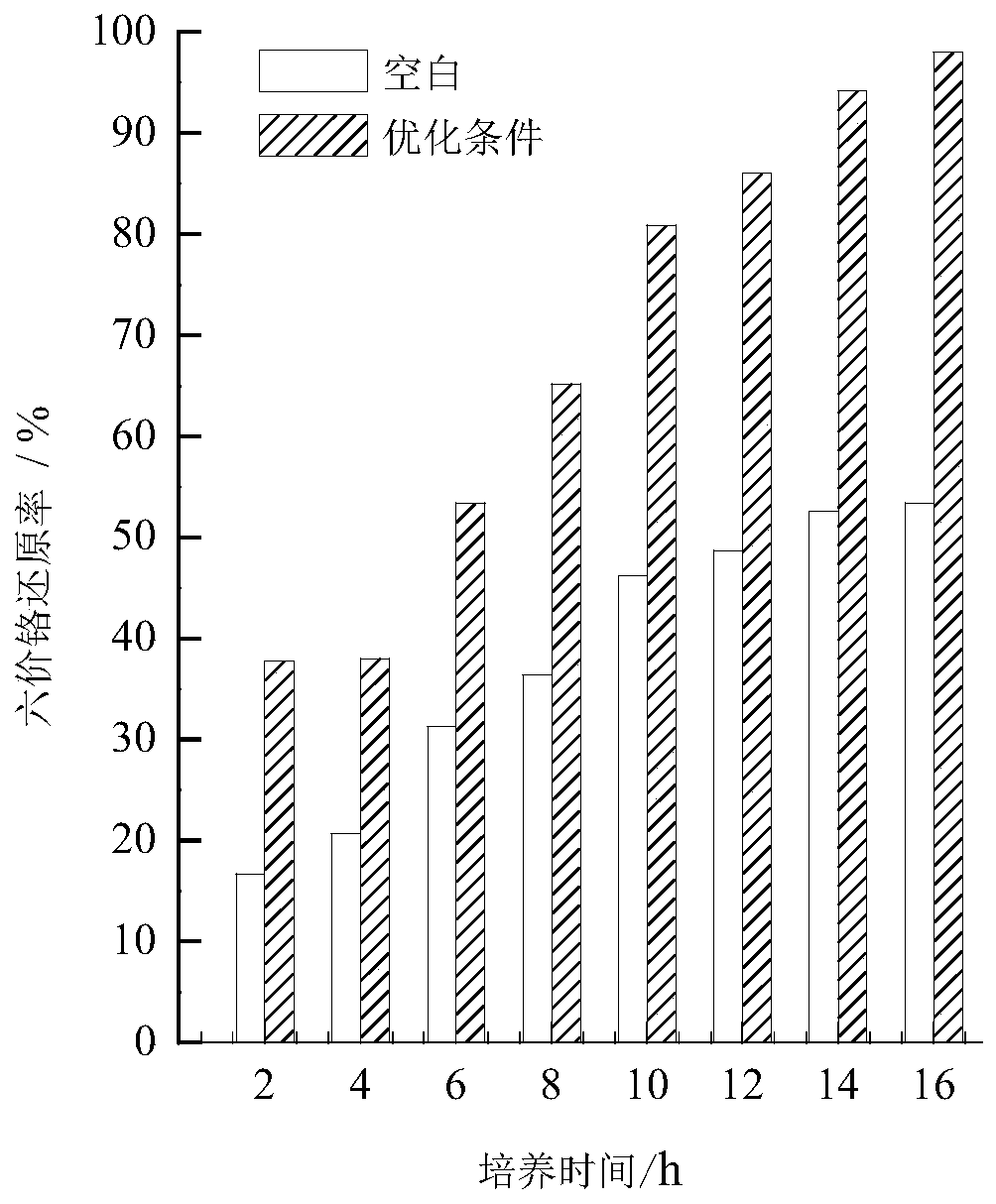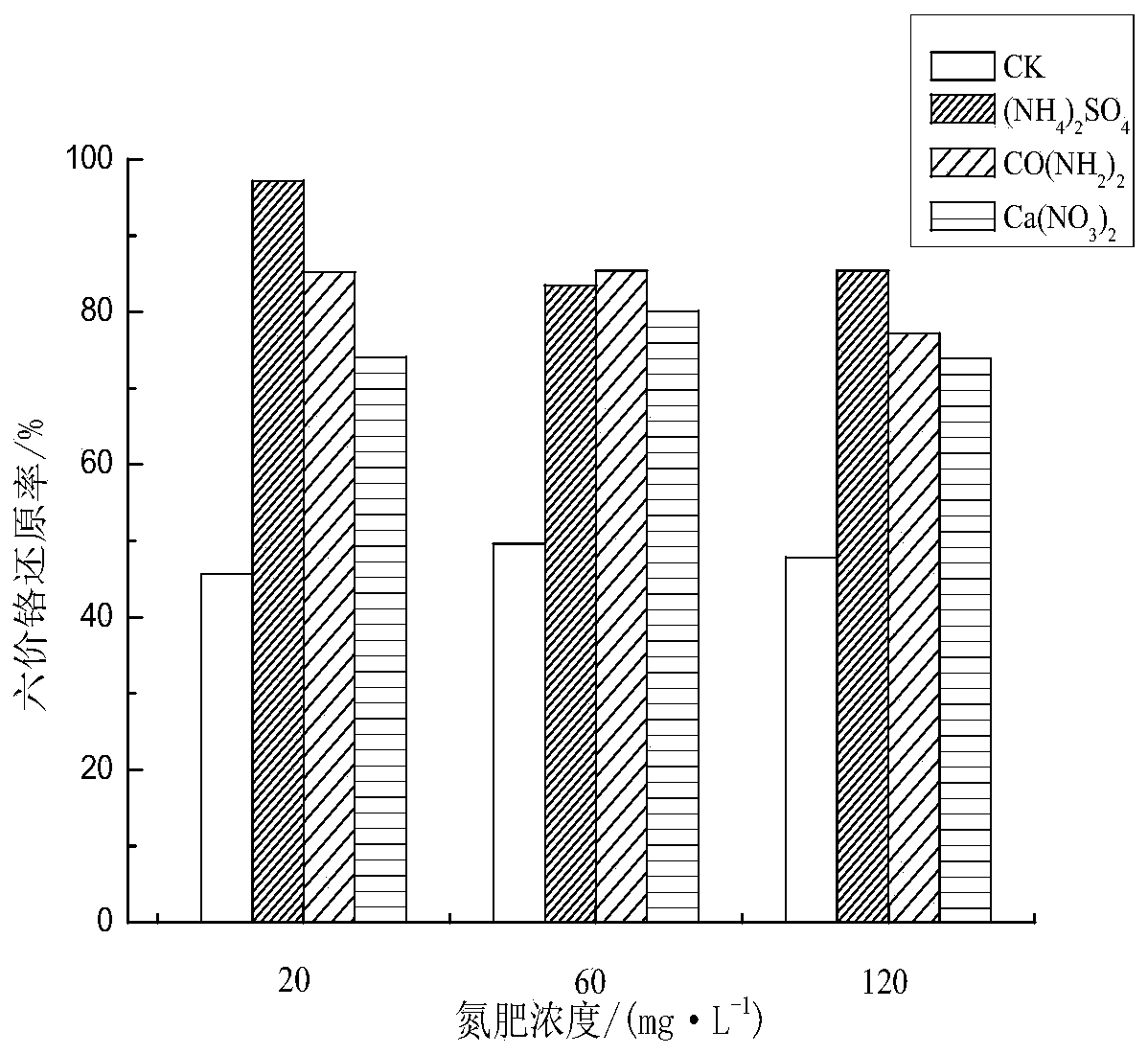Method for purifying chromium in water by utilizing interaction between bacillus cereus and leersia hexandra Swartz
A technology of bacillus cereus and water purification, applied in the field of water pollution treatment, can solve the problems of low purification treatment efficiency and poor purification effect, and achieve the effect of high reduction rate and short time
- Summary
- Abstract
- Description
- Claims
- Application Information
AI Technical Summary
Problems solved by technology
Method used
Image
Examples
Embodiment 1
[0066] The Bacillus cereus used in the experiment was purchased from the China Center for Type Culture Collection (CCTCC), numbered CCTCCAB2011085, and the strain was in the form of freeze-dried powder.
[0067] In the early stage of the test, Bacillus cereus was inoculated on the inclined tube LB medium, and after the strain was activated and recovered, the expansion culture was carried out (control shaker conditions: 30°C, 160r / min), and the bacteria in the Erlenmeyer flask grew turbid after 12 hours of culture. There is a bacterial film on the wall of the bottle, which is light milky white, and the sedimentation is stratified after standing. The OD600 of the bacteria is 0.8, and it is in the logarithmic growth phase. Inoculate to the third generation, after the metabolism of the strain is stable, the experiment is carried out.
[0068] Divide the enlarged Bacillus cereus into 10mL centrifuge tubes, place them in a high-speed refrigerated centrifuge and centrifuge at 8000r / m...
Embodiment 2
[0073] Select different forms of nitrogen fertilizer, phosphorus fertilizer and potassium fertilizer, and add them to the pre-cultivated Lishihe at low, medium and high concentrations respectively. The pH of the solution was controlled at 7.3, and the dissolved oxygen DO of the solution was 4mg / L. The Lishihe after the pre-cultivation was moved into a plastic beaker with an initial concentration of Cr(VI) of 10mg / L and an initial concentration of bacterium of 0.1g / L. Bacillus cereus was expanded to the logarithmic growth phase in liquid LB medium, and the roots of Lishihe were protected from light, and repeated in three groups to test the influence of exogenous nutrients on the system, and 20 strains of Lishihe were placed in each repetition. Make sure that other conditions are the same during the experiment. The form and concentration of exogenous substances are shown in the table below:
[0074] Table 3 Form and concentration of exogenous nutrients
[0075]
[0076] ...
PUM
 Login to View More
Login to View More Abstract
Description
Claims
Application Information
 Login to View More
Login to View More - R&D
- Intellectual Property
- Life Sciences
- Materials
- Tech Scout
- Unparalleled Data Quality
- Higher Quality Content
- 60% Fewer Hallucinations
Browse by: Latest US Patents, China's latest patents, Technical Efficacy Thesaurus, Application Domain, Technology Topic, Popular Technical Reports.
© 2025 PatSnap. All rights reserved.Legal|Privacy policy|Modern Slavery Act Transparency Statement|Sitemap|About US| Contact US: help@patsnap.com



